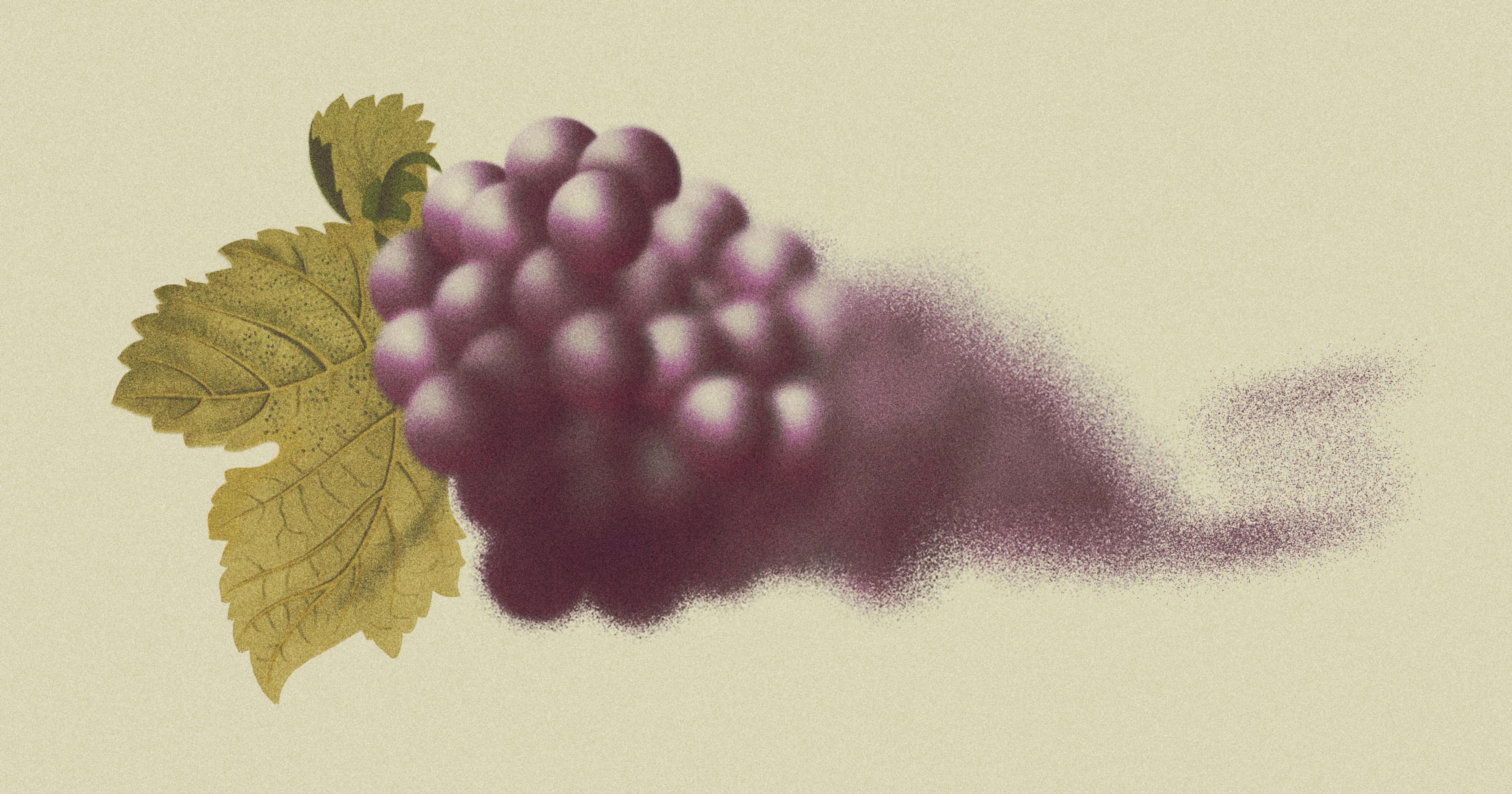As the Great Salt Lake shrivels amid a historic drought, fish farmers around the globe face an impending baby food shortage of their own.
That the world’s oceans are under threat from climate change, pollution, and overfishing is no great secret — and consumers around the world have responded with demand for more sustainably produced seafood.
Yet even as sustainable aquaculture has grown by leaps and bounds, the ultimate fate of this industry may be tied to a critical fishery located hundreds of miles from the nearest ocean, in the middle of one of the world’s harshest deserts.
Utah’s Great Salt Lake produces up to 45% of the world’s supply of artemia, a tiny crustacean also known as brine shrimp. It’s also, industry leaders and academics say, one of the best-managed natural fisheries in the world.
But while you might be able to get artemia from some other location, what you can’t do is raise species like shrimp, prawns, and sea bass commercially without them. The tiny shrimp of the desert is the only easily procured food these popular species of fish will accept during certain phases of their lifespan.
So naturally, with the Great Salt Lake sitting at a record low water level amid the historic drought gripping the American West, fish farmers all around the world have begun to take notice. Should the lake continue to shrink, experts say, there’s a not-insignificant chance that the world will lose nearly half its capacity to produce some fish species in captivity.
“Artemia are therefore an irreplaceable ingredient for successful and sustainable aquaculture,” said Geert Rombaut, product manager for artemia at global aquafeed distributor INVE Aquaculture, one of the founding members of the Great Salt Lake Brine Shrimp Cooperative that oversees harvest on the lake. “To use them wisely and with maximum efficiency is therefore not only nice to have but a must-have for us ... One could simply say, without artemia, [there is] no shrimp or marine fish aquaculture.”
A record no one wants to break
The water level of the Great Salt Lake fluctuates naturally. As a terminal lake — a body of water that doesn’t ultimately flow into the ocean — water only leaves the lake via evaporation. For the level of the lake to remain stable, the amount of water that enters the lake from its tributaries must be roughly equal to what evaporates out. But natural systems are rarely this precise; in a typical year, the Great Salt Lake gradually expands in the spring and winter when precipitation in the surrounding mountains increases, and shrinks slightly in the hotter, drier months of summer and fall.
But for the last several decades, evaporation has, on balance, exceeded new water entering the lake. Experts say the cause of this decline is twofold: Drought, particularly in the last few years, has decreased the total rain and snowfall that would otherwise feed the lake. And while the water in the lake itself is too salty to drink, human water consumption from its tributaries prevents a growing proportion of this precipitation from reaching the lake.
The lake hit a new low on July 3 this year, falling to an elevation of 4,190.1 feet above sea level. Records dating back to Mormon settlement of the Salt Lake area show that the lake has dropped 11 feet — 48% of its total volume — since 1847.
“This is not the type of record we like to break,” Utah Department of Natural Resources executive director Joel Ferry said in a statement accompanying the announcement of the new record. “Urgent action is needed to help protect and preserve this critical resource. It’s clear the lake is in trouble. We recognize more action and resources are needed, and we are actively working with the many stakeholders who value the lake.”
Water levels are expected to continue to drop this fall in line with natural weather patterns, potentially reaching as low as 4189 feet. The lowest lake elevation contemplated by the state’s current management plan is 4188, according to Laura Vernon, Great Salt Lake coordinator for the Utah Department of Natural Resources.
“We would need several consecutive years of average, two-foot increases [in the lake level] to get us back to a sustainable elevation.“
“If we get there this year, we’re not going to have management prescriptions for when the lake gets any lower,” Vernon said. “So now we’re going to start looking at impacts to resources when the lake goes even lower.”
This isn’t to suggest that impacts haven’t begun — fishers on the lake have already had to dredge harbors and channels at a cost of millions of dollars per year in order to access the shrinking lake, according to Thomas Bosteels, CEO of the Great Salt Lake Brine Shrimp Cooperative. But he added that the size of the lake isn’t the primary driver for the artemia population: The critical issues are salinity and nutrients. And the shallower the lake gets, the saltier it gets.
“There is a minimum [salinity] needed for the brine shrimp population to survive, but as the salinity increases, brine shrimp spend more energy to survive,” Bosteels explained. Tired brine shrimp produce fewer offspring, which means smaller harvests. And while the state is able to manage the salinity of the lake to a certain extent by moving water from one end of the lake to the other, additional efforts must ensure adequate water and nutrients reach the lake, Bosteels said.
Brine shrimp on the Great Salt Lake begin to suffer from the effects of excess salinity at 4191 feet, according to Vernon — nearly a foot higher than the current elevation. Maintaining a sustainable brine shrimp population long-term, she said, likely requires a lake elevation of at least 4192.
“We would need several consecutive years of average, two-foot increases [in the lake level] to get us back to a sustainable elevation,” Vernon said. “We’re typically losing two feet per year, so you can do the math of how long it would take to get back up to a specific elevation.”
Even so, the aquaculture industry is holding out hope for the world’s largest, but rapidly shrinking, saline lake. The brine shrimp industry has faced crises on the lake in the past, they say, and they expect the lake will pull through once again.
The instant coffee of fish food
The Great Salt Lake may be a remnant of an ancient Lake Bonneville that dried up before human history began, but its critical role in global aquaculture supply chains is relatively new. In the 1930s, a handful of specialist companies began to harvest artemia as food for hobbyists who raised tropical pet fish, according to Gilbert Van Stappen, a professor who works for the Laboratory of Aquaculture and the Artemia Reference Center at Ghent University in Belgium. But brine shrimp wouldn’t be harvested at scale until the 1970s and 1980s, when demand for seafood began to exceed natural supplies and commercial aquaculture started to take off.
The Great Salt Lake isn’t the world’s only source of artemia. But the lake, which boasts a salinity two to seven times greater than the ocean depending on the year, contains far greater quantities of artemia than virtually all other places where the brine shrimp can be found. Fish and other predators that limit the artemia population in ocean estuaries and other saline environments can’t survive in water with a salt content exceeding 10 to 12%, so the tiny crustaceans have the Great Salt Lake all to themselves, Bosteels said.
The Great Salt Lake is also prone to long, cold winters. So as part of their strategy to survive in this extreme environment, brine shrimp can produce encysted embryos colloquially called “brine shrimp eggs.” These cysts can survive cold temperatures and even long periods of time without water in a dried form that resembles sand. The cysts can then be “hatched” within 24 hours by returning them to an appropriate aquatic environment, a capacity that has made “Sea-Monkeys” — a particular breed of artemia — a popular novelty pet.
Brine shrimp fill a specific niche of being the right size, containing the correct nutritional composition, and having the capacity to swim away to trigger a predator-prey reflex.
“So you have this ideal food that is in a way, the instant coffee of live feed in marine hatcheries,” Bosteels said. “You can keep it stored in a dry form for a long period of time, and when you need it you can hatch it quickly and feed your marine fish and shrimp to close the cycle of fish rearing in captivity.”
Not every fish we raise in captivity requires artemia as a food source. Freshwater species like carp would have no idea what to do with a crustacean from a hyper-saline environment, Van Stappen explained. Herbivores like tilapia are, well, vegetarian, and even carnivores like salmon and trout that spend time in freshwater environments don’t eat artemia. But for some of the most popular marine species, including shrimp and prawns, several species of crab, sea bass, snapper, and many tropical fish, artemia is an essential food source.
In total, aquaculture produces more than 10 million tons of these species per year, accounting for roughly one-sixth of the world’s fish and crustacean production, according to Bosteels.
Even though the young of these species are tiny, Bosteels said, they still require live prey. Brine shrimp fill a specific niche of being the right size, containing the correct nutritional composition, and having the capacity to swim away to trigger a predator-prey reflex. According to marine biologist Francesco Lenzi at Maricoltura di Rosignano Solvay, a fish farm in northern Italy, artemia may also act in a manner similar to colostrum in mammals, providing not only nutrients but enzymes and even bacteria that jump-start the digestive system and boost immune function,
“Fish, like other animals in the first stages of life, are building their future,” Lenzi said. “Like all species, if you don’t feed them well at the beginning, they will have problems their entire life.”
Necessity breeds sustainability
Like any industry, aquaculture was none too keen to have such a critical input coming from a single natural source. So in the 1990s, the industry began to explore natural and manmade alternatives to the Great Salt Lake in the former Soviet Union and China, according to Van Stappen. Today each region produces about a third of the world’s artemia, he said, though production varies from year to year and the Great Salt Lake consistently remains the world’s largest single source.
But even before global conflict called access to supplies in Eastern Europe into question, producers had a reason to prefer artemia from the Great Salt Lake to those from other sources, Van Stappen says: The Utah lake is by far the most sustainably managed source of artemia.
“They have worked out this model so they know how much [artemia] they can take out of the lake without compromising the long-term survival of the species,” something that is essentially unique in the artemia industry, Van Stappen said. “Other places don’t even come close to doing it.”
The companies harvesting brine shrimp from the Great Salt Lake voluntarily initiated the creation of these harvest regulations in the 1990s, after the collapse of the Newfoundland cod fishery brought concerns about overfishing to a head.
Fortunately, hitting a record low lake level has inspired action among local officials.
“A lot of people in the industry were connected to these natural fisheries, and really concerned” that something similar could happen elsewhere — including in the Great Salt Lake, Bosteels said. The brine shrimp fishers agreed to pay higher fees to fish on the Great Salt Lake in order to fund a program, administered by the state of Utah Division of Wildlife Resources, that would monitor the brine shrimp population and determine how much could be fished out of the lake each year.
“The harvest management model is based on the need to leave an optimal escapement stock to repopulate the lake each spring,” Bosteels said. “The way the population survives is by producing encysted offspring. The live brine shrimp die in the winter, so there needs to be an optimal amount to reseed the lake in the spring.”
The state’s research teams have also devoted time to investigating the needs of the migratory birds that rely on the brine shrimp as a source of food for migration, and on the impact to the lake from other human activities. And it is this past success that has the global aquaculture industry hoping the Great Salt Lake artemia will find a way to make another comeback.
Fortunately, hitting a record low lake level has inspired action among local officials, Vernon said. The state legislative session this past winter yielded an unprecedented number of measures intended to reverse the decline of the lake, including the creation of a water trust, a revision of the state’s water laws, and an allocation of $40 million to protect the lake.
The level of action has Bosteels feeling hopeful about the future of the lake and of the industry — but his optimism remains measured.
“We have a lot of the potential measures in place to maintain an ideal environment in the lake, but at the end of the day, there is a drought out there,” he said, “and it’s not enough to just build a framework. The framework has to be used.”
But even with the lake under threat, Van Stappen doesn’t believe aquaculture producers are likely to stop rooting for the Great Salt Lake artemia any time soon. Losing the lake would do more than strain global aquaculture production, he said — it would also represent the loss of a critical example of sustainable fishing amid a growing need for inspiration.







